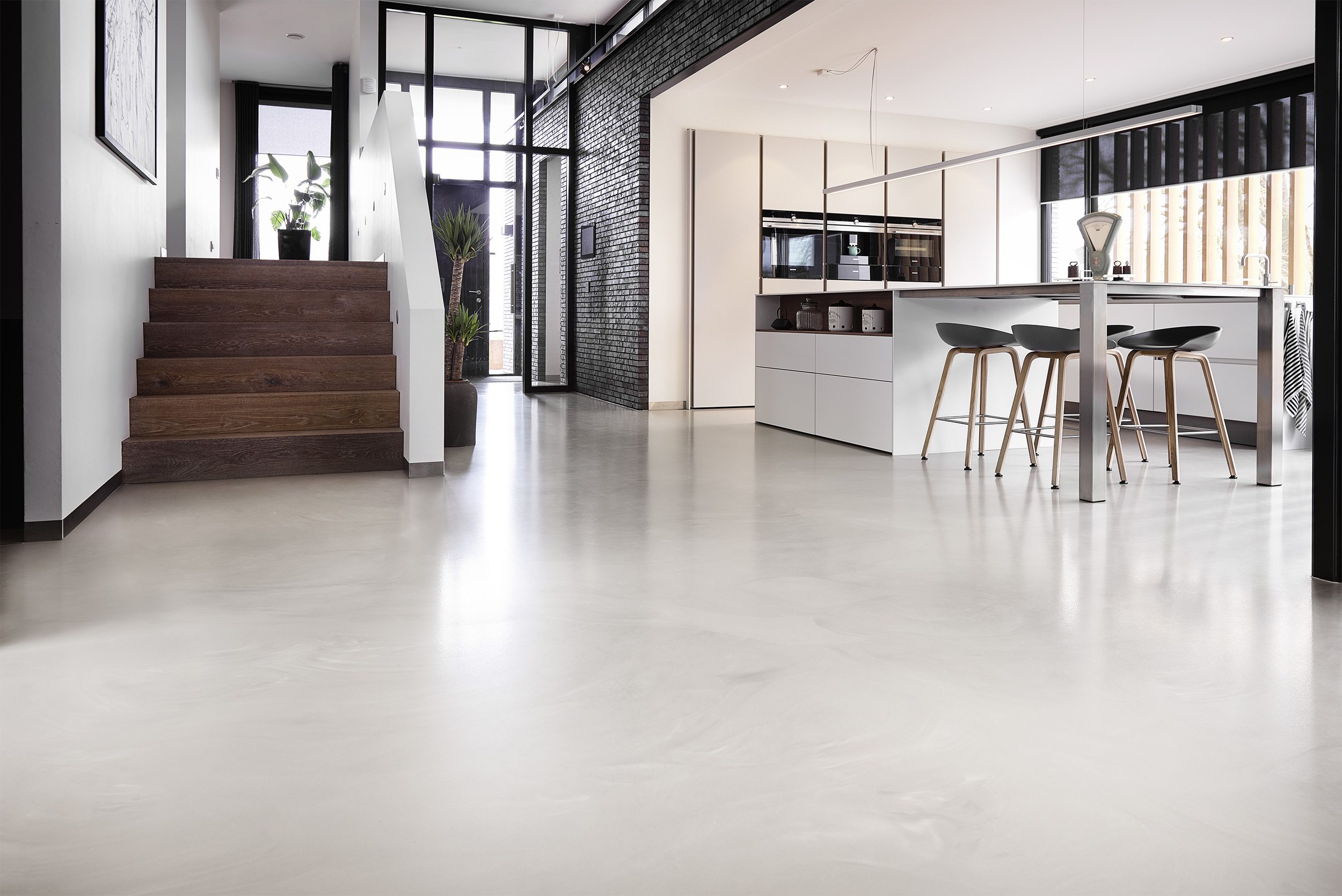Synthetic resin flooring is conquering our living rooms
Synthetic resin floor coverings have special “taker qualities”. In addition to being durable and tough, they also look chic and fit in with modern living trends. That’s why they are no longer exclusively used on terraces or in garages but have also found their way into private living space. We explain what is important when installing synthetic resin floors and what design options you have.
Tip 1: Design your individual surface
Synthetic resin flooring has found its way into private homes via the industrial and commercial sector. The advantages: It is hard-wearing, durable and easy to maintain. You can choose from a whole range of design options, including matt and rough or smooth and glossy surfaces. Colored coatings are also possible. Likewise, decorative materials such as small stones, glass granules, glitter or painted patterns can be incorporated into the synthetic resin compound. What you need to know, though, is that synthetic resin coverings are difficult to remove again.
Tip 2: Properly prepare the subfloor
Synthetic resin floors are applied in a liquid state. They require an absolutely smooth, even, clean and dry subfloor. It is therefore crucial to first clean the floor carefully, fill all holes and cracks and level out any unevenness. Skilled craftsmanship is required to thoroughly mix the resin and hardener and expertly apply the primer. If you are unsure, it is better to hire a professional floor layer. He knows the different properties of synthetic resins and will choose products adapted to the conditions on site in order to ensure a perfect result.
Tip 3: Different types of synthetic resins
The time needed to install synthetic resin floors varies. Epoxy resin floors and polyurethane floors (PU floors) require several work steps – from priming and levelling to coating and the final sealing. In addition, you also need to take the drying time into account. By contrast, floors made of polymethyl methacrylate resin (PMMA) can be produced much faster. However, they require a very experienced floor layer who knows how to handle this fast-curing material.
Tip 4: Pay attention to healthy materials in your home
Nowadays, professional floorers only use products that are not harmful to human health. To be on the safe side, just take a quick look at the packaging. If the product is healthy for living and environmentally friendly on top, this will be indicated by eco labels such as the Europe-wide recognized EMICODE EC1 seal.

Photo: © Uzin Utz Group/GEV
Do You Have Questions?
If you have any questions on certain topics or want to contact us for another reason, please contact us by phone or email.
Phone: +49 (0)211 843 449 – 01
info@emicode.com
Share article on Social Media:
